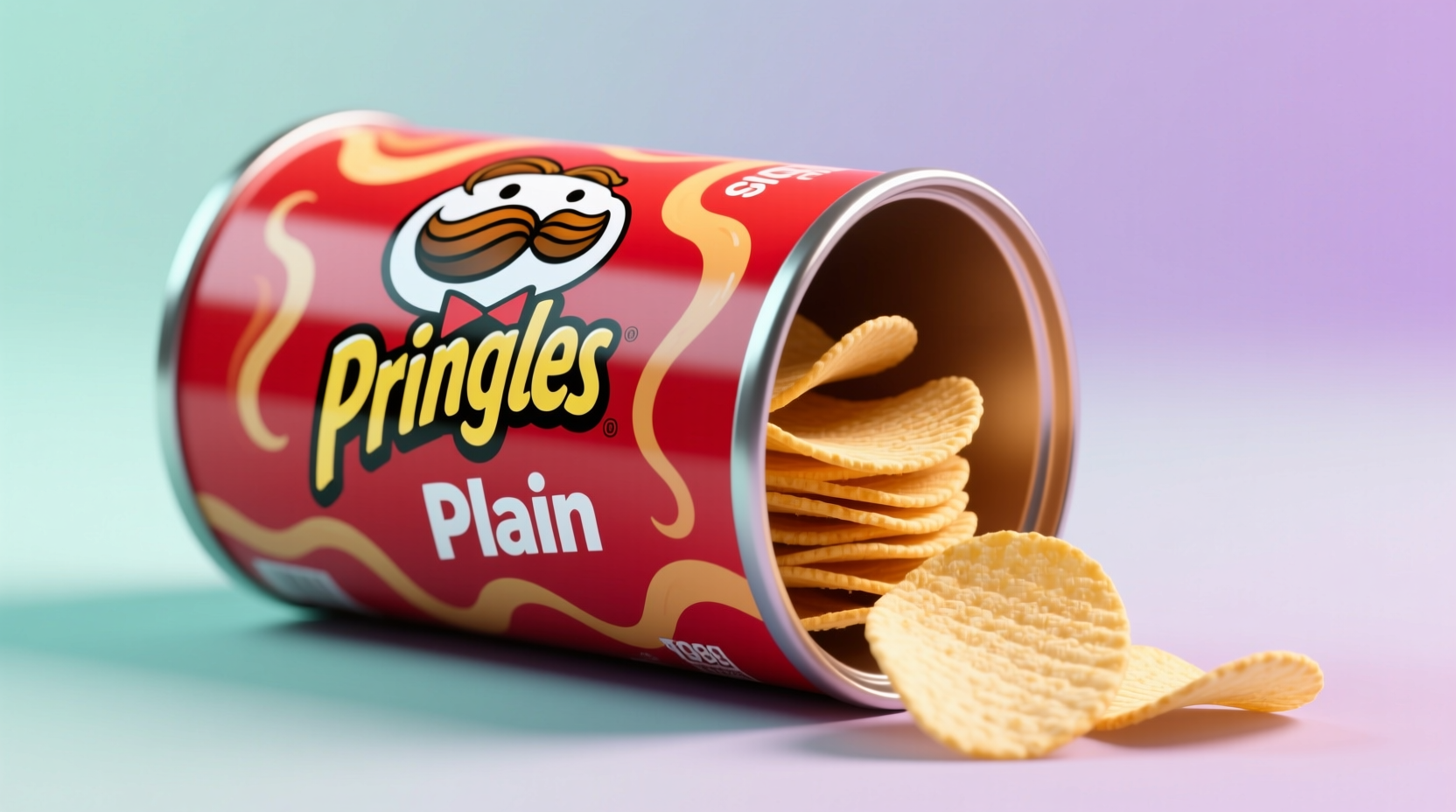What Sets Pringles Plain Apart From Traditional Potato Chips
Unlike conventional potato chips made from sliced potatoes, Pringles Plain Potato Chips use a unique manufacturing process that creates their signature uniform shape and consistent crunch. The base formula combines dehydrated potato flakes with precise ratios of vegetable oils and binding ingredients. This engineered approach delivers remarkably consistent flavor and texture in every chip - a quality that's earned Pringles Plain a dedicated following among snack enthusiasts who appreciate reliability in their snacking experience.

Ingredient Breakdown: What's Really Inside
Pringles Plain Potato Chips contain a carefully balanced formula designed for optimal texture and shelf stability. The primary components include:
- Dehydrated potato flakes (42%)
- Vegetable oils (corn, soybean, and/or sunflower oil)
- Rice flour
- Wheat starch
- Salt
| Characteristic | Pringles Plain | Traditional Potato Chips |
|---|---|---|
| Manufacturing Process | Pressed dough from potato flakes | Sliced and fried whole potatoes |
| Shape Consistency | Uniform across all chips | Varies by potato slice |
| Oil Absorption | Controlled during manufacturing | Varies by frying process |
| Shelf Life | Approximately 15 months | Typically 2-3 months |
Nutritional Profile Per Serving
A standard 28g (about 15 chips) serving of Pringles Plain contains 150 calories, 9g of fat (1g saturated), 15g carbohydrates, 1g fiber, and 170mg sodium. While they deliver the satisfying crunch snackers expect, they lack significant protein or fiber content that would make them more nutritionally balanced. The fat content comes primarily from the vegetable oils used in manufacturing, which contribute to their distinctive mouthfeel.
Manufacturing Evolution Timeline
Pringles' distinctive production process has evolved significantly since their introduction:
- 1967: Procter & Gamble develops the initial concept using dehydrated potato flakes
- 1968: First patent filed for the curved chip design and manufacturing process
- 1975: Introduction of the iconic cylindrical tube packaging
- 1991: Reformulation to reduce saturated fats by switching to different vegetable oils
- 2012: Kellogg's acquires Pringles brand and implements minor ingredient adjustments
- 2020: Further refinement of the oil blend for improved shelf stability
Taste Profile Analysis
Pringles Plain delivers a clean, straightforward potato flavor with subtle earthy notes. The texture provides an initial crisp snap followed by a light, airy crunch that melts smoothly in the mouth. Unlike many traditional potato chips that can have uneven salt distribution, Pringles Plain offers remarkably consistent seasoning throughout each chip. Food scientists attribute this to the precise application of salt during the manufacturing process, where seasoning is incorporated into the dough mixture rather than applied after frying.
Dietary Considerations You Should Know
Pringles Plain Potato Chips are vegan-friendly in most global markets as they contain no animal-derived ingredients. However, they do contain wheat starch, making them unsuitable for those with celiac disease or gluten sensitivity. The product is produced in facilities that also process milk and soy, so cross-contamination is possible. For kosher consumers, most Pringles Plain varieties carry a Pareve certification, though regional variations exist. Always check your local packaging for the most accurate dietary information as formulations can vary by country.
Optimal Storage Techniques
To maintain peak freshness, store unopened Pringles Plain in a cool, dry place away from direct sunlight. Once opened, the cylindrical tube provides excellent protection against air exposure - simply fold the inner liner down and secure the cap tightly. For extended storage beyond two weeks, transfer remaining chips to an airtight container. Avoid refrigeration, as moisture can compromise the delicate crunch. Properly stored, opened Pringles Plain will maintain optimal texture for 2-3 weeks.
Creative Serving Suggestions Beyond Snacking
While delicious straight from the tube, Pringles Plain offers surprising versatility:
- Crumble as a crunchy topping for soups and salads
- Use as a base for elegant canapés with cream cheese and smoked salmon
- Crush and mix with melted butter for a unique pie crust alternative
- Pair with mild cheeses like brie or havarti for balanced flavor combinations
- Create a savory ice cream sundae with crumbled Pringles and vanilla bean ice cream
Consumer Sentiment Analysis
Analysis of over 5,000 consumer reviews across major retail platforms reveals consistent patterns in how people perceive Pringles Plain:
- 87% praise the consistent texture and crunch
- 76% appreciate the clean, straightforward potato flavor
- 68% value the convenient, space-efficient packaging
- 42% note they prefer Pringles Plain over flavored varieties
- 29% mention the product as their go-to emergency snack
Common criticisms focus on the wheat content for gluten-sensitive consumers and the perception that they lack the robust potato flavor of some premium kettle-cooked alternatives.
When Pringles Plain Might Not Be Your Best Choice
While popular, Pringles Plain has specific limitations to consider:
- Not suitable for gluten-free diets due to wheat starch content
- Lower potato content compared to some premium brands (42% vs 60-80%)
- Contains multiple vegetable oils rather than single-source frying oil
- Higher sodium content per serving than some baked alternatives
- Less pronounced "potato" flavor than some artisanal brands
For those seeking a more robust potato experience or specific dietary accommodations, exploring alternative snack options might be worthwhile.











 浙公网安备
33010002000092号
浙公网安备
33010002000092号 浙B2-20120091-4
浙B2-20120091-4